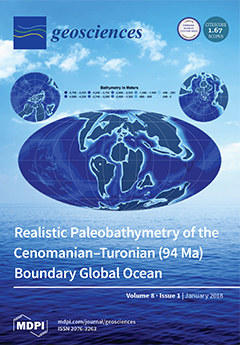1
Icelandic Meteorological Office, Bústaðavegur 7-9, 108 Reykjavík, Iceland
2
Department of Space, Earth and Environment, Chalmers University of Technology, SE-412 96 Göteborg, Sweden
3
Department of Geography, King’s College London, WC2R 2LS London, UK
4
School of Earth and Environment, University of Leeds, LS2 9JT Leeds, UK
5
School of Earth and Environmental Sciences, University of Manchester, M13 9P Manchester, UK
6
Dipartimento DiSTeM, University of Palermo, Via Archirafi 36, 90123 Palermo, Italy
7
School of GeoSciences, University of Edinburgh, EH8 9XP Edinburgh, UK
8
Environment Agency of Iceland, Suðurlandsbraut 24, 108 Reykjavík, Iceland
9
AUV Consultants, 52Vesturás, Reykjavík 101, Iceland
10
Institute of Earth Sciences, University of Iceland, Sæmundargata 2, 101 Reykjavík, Iceland
11
Instituto Dom Luiz, University of Beira Interior, Rua Marques d´Avila e Boloma, 6201-001 Covilhã, Portugal
12
Istituto Nazionale di Geofisica e Vulcanologia- Sezione di Catania, 95125 Catania, Italy
13
School of Earth Sciences, University of Bristol, BS8 1TH Bristol, UK
14
AIRES Pty Ltd, PO Box 156, Mt Eliza, Victoria 3930, Australia
15
Istituto Nazionale di Geofisica e Vulcanologia- Sezione di Palermo, Via Ugo la Malfa 153, 90146 Palermo, Italy
16
Sapienza, University of Rome, 00184 Rome, Italy
17
National Research Council of Italy, Institute of Atmospheric Sciences and Climate, Via Fosso del Cavaliere 100, 00133 Rome, Italy
add
Show full affiliation list
remove
Hide full affiliation list
Abstract
The 2014–2015 Bárðarbunga fissure eruption at Holuhraun in central Iceland was distinguished by the high emission of gases, in total 9.6 Mt SO
2, with almost no tephra. This work collates all ground-based measurements of this extraordinary eruption cloud made under particularly
[...] Read more.
The 2014–2015 Bárðarbunga fissure eruption at Holuhraun in central Iceland was distinguished by the high emission of gases, in total 9.6 Mt SO
2, with almost no tephra. This work collates all ground-based measurements of this extraordinary eruption cloud made under particularly challenging conditions: remote location, optically dense cloud with high SO
2 column amounts, low UV intensity, frequent clouds and precipitation, an extensive and hot lava field, developing ramparts, and high-latitude winter conditions. Semi-continuous measurements of SO
2 flux with three scanning DOAS instruments were augmented by car traverses along the ring-road and along the lava. The ratios of other gases/SO
2 were measured by OP-FTIR, MultiGAS, and filter packs. Ratios of SO
2/HCl = 30–110 and SO
2/HF = 30–130 show a halogen-poor eruption cloud. Scientists on-site reported extremely minor tephra production during the eruption. OPC and filter packs showed low particle concentrations similar to non-eruption cloud conditions. Three weather radars detected a droplet-rich eruption cloud. Top of eruption cloud heights of 0.3–5.5 km agl were measured with ground- and aircraft-based visual observations, web camera and NicAIR II infrared images, triangulation of scanning DOAS instruments, and the location of SO
2 peaks measured by DOAS traverses. Cloud height and emission rate measurements were critical for initializing gas dispersal simulations for hazard forecasting.
Full article





